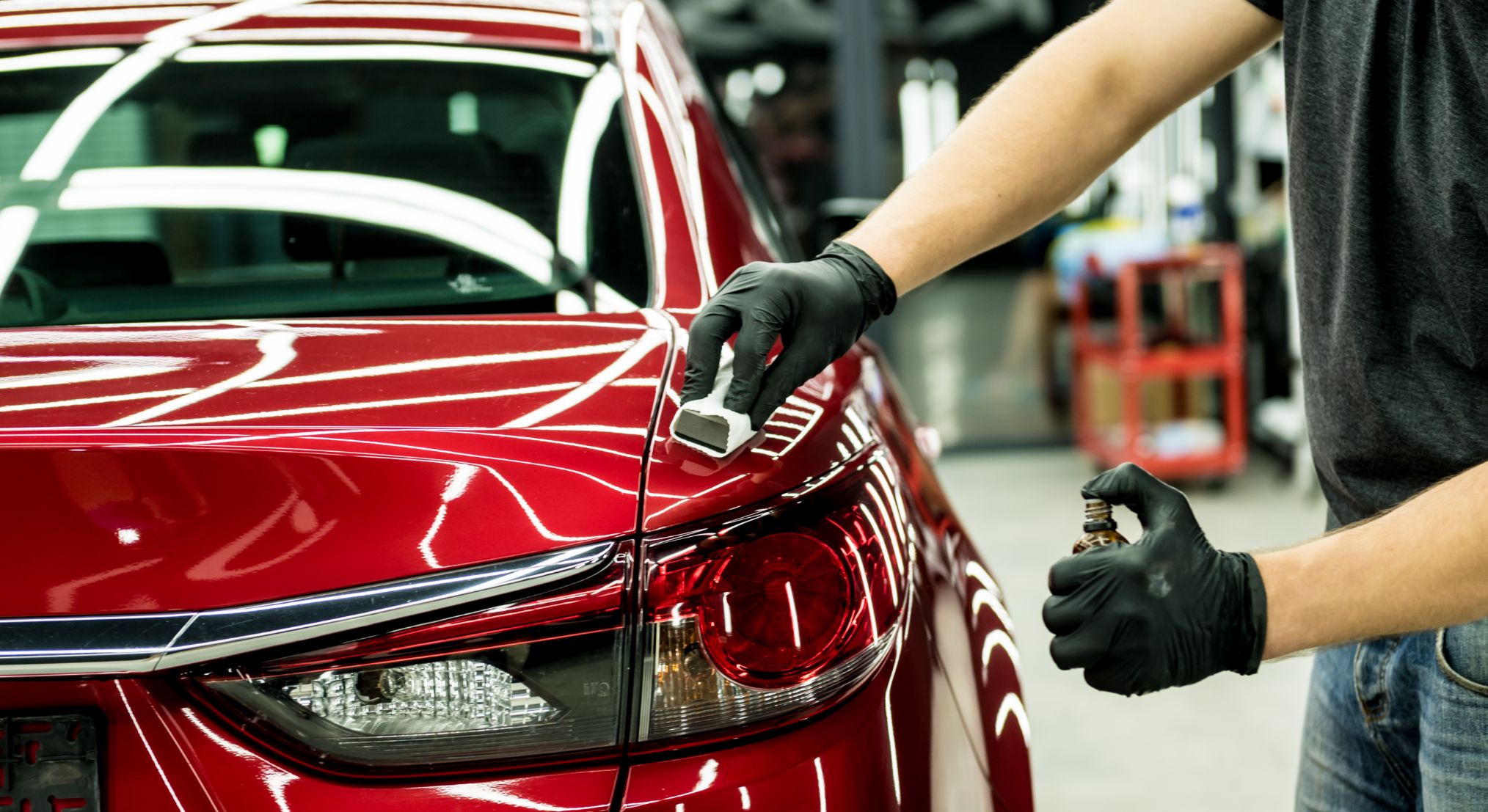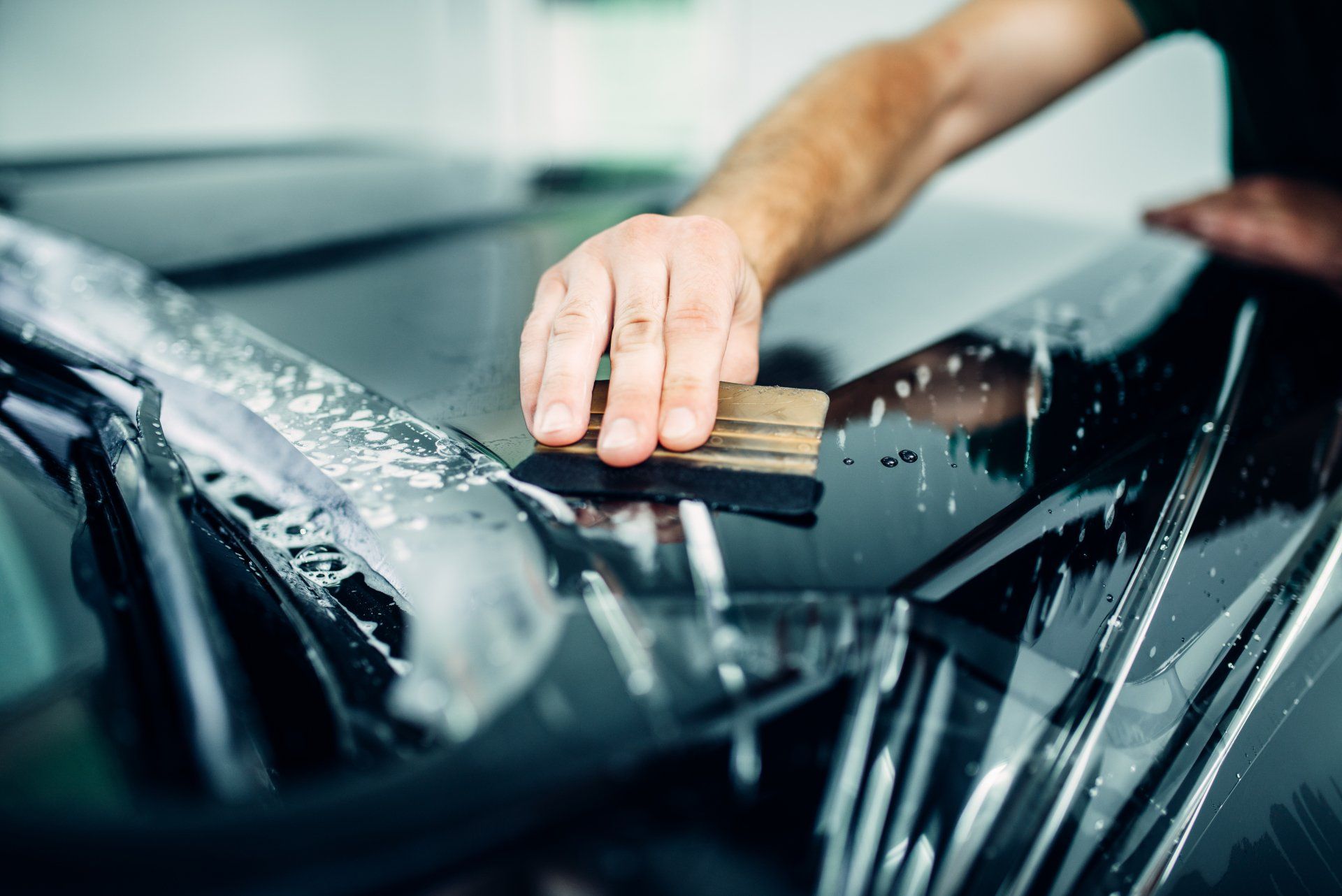Why Ceramic Coating is Essential for Maintaining Your Car’s Value and Appearance
Why Ceramic Coating is Essential for Maintaining Your Car’s Value and Appearance
Blog Article
Ceramic Finishing vs. Traditional Wax: Which Offers Better Defense?
The discussion in between ceramic layer and traditional wax for car defense is one that values careful examination, especially in terms of toughness, resistance to ecological variables, and total maintenance needs. While ceramic coverings guarantee prolonged durability and remarkable defense against a range of threats, standard wax may appeal to those looking for a more economical, albeit short-term, option.
Overview of Ceramic Finishing
Ceramic finishing has actually gained considerable appeal among auto enthusiasts and specialists alike for its advanced safety qualities. This ingenious solution is composed of a fluid polymer that chemically bonds to the automobile's factory paint, developing a long lasting layer of security. Unlike conventional wax, which usually lasts for a few weeks to months, ceramic coverings can offer long-lasting protection for several years, depending on the product made use of and application method.

While the first price of ceramic finish may be more than that of typical wax, the long-lasting benefits, consisting of sturdiness and decreased maintenance frequency, often validate the financial investment. As automobile innovation proceeds to develop, ceramic coatings have become a favored choice for those seeking optimum protection and long life for their vehicles.
Review of Conventional Wax
The attraction of conventional wax lies in its simplicity and convenience of use, making it a favored selection amongst auto owners looking for to improve their vehicle's appearance and give a standard degree of defense. Typically originated from natural carnauba or synthetic polymers, traditional wax forms a thin safety layer over the paintwork. The application procedure is simple, usually entailing an easy buffing with a microfiber cloth, making it obtainable to both newbie and knowledgeable users.
Conventional wax products are available in numerous solutions, each designed to deal with particular needs, such as enhancing luster or supplying water beading. The convenience of wax permits use on different surfaces, including paint, glass, and even plastic trim. While the application can be done by hand or device, the trick is to make certain a tidy surface area for optimum attachment.
Nonetheless, one remarkable characteristic of typical wax is its relatively short life-span compared to modern alternatives. Commonly providing defense that lasts from a few weeks to a few months, constant reapplication is necessary to keep its effectiveness. Regardless of these constraints, traditional wax remains a preferred option for cars and truck enthusiasts who value the aesthetic enhancement it offers.
Key Defense Features
When taking into consideration paint protection for vehicles, it's important to recognize the vital functions that distinguish conventional wax from advanced alternatives like ceramic finishings. One of the primary safety qualities of ceramic coverings is their longevity. Unlike wax, which typically lasts a few weeks, ceramic layers can sustain for a number of years, offering long-term defense against ecological impurities.
Ceramic layers produce a hydrophobic surface area, fending off water and preventing dirt, grime, and various other particles from sticking to the paint. This feature not just boosts the car's look yet also decreases the regularity of cleaning. Furthermore, ceramic coverings supply superior UV security, securing the paint from unsafe sunlight exposure that can cause fading and oxidation.
In contrast, typical wax provides a much more short-term barrier versus elements but lacks the resistance to scrapes and chemical discolorations that ceramic layers offer. While wax can boost gloss, its protective capabilities are limited, particularly versus harsher environmental aspects such as bird droppings, tree sap, and go roadway salt. In summary, the essential defense functions of ceramic coatings substantially outperform those of standard wax, making them an exceptional option for resilient lorry care.
Application Process Comparison

In comparison, the application of ceramic layers is more complicated and time-sensitive, commonly requiring specialist help for ideal outcomes. The lorry's surface area must be meticulously cleaned, decontaminated, and brightened to eliminate blemishes before the finishing is used.
Inevitably, the choice between wax and ceramic finishing pivots not just on protection levels but likewise on the time, knowledge, and resources offered for their corresponding applications. - ceramic coating
Cost Analysis and Longevity
Cost plays a considerable function in the decision-making process between conventional waxes and ceramic finishes. Ceramic layers usually command a higher in advance investment, varying from $500 to $2,000 depending upon the quality, brand name, and professional application solutions. This preliminary price can be attributed to the advanced innovation and materials utilized in ceramic solutions, which supply remarkable sturdiness and protection.
On the other hand, conventional waxes are much more affordable, generally setting you back between $20 to $100 for do it yourself applications. Nonetheless, the durability of wax items is limited, usually needing reapplication every couple of months to maintain their safety qualities. This repeating cost can accumulate gradually, making wax much less economical over time.
Ceramic layers, while much more pricey initially, provide resilient outcomes, frequently surpassing 2 to five years with appropriate maintenance. This long life can offer considerable savings in time, specifically for car owners that focus on security and visual preservation - ceramic coating. Ultimately, the choice in between conventional waxes and ceramic finishings need to consider both preliminary prices and long-term value, considering the maintenance requirements and preferred protection level for the car
Final Thought
In summary, ceramic finishes give premium protection for automobile paint contrasted to typical content wax, offering improved longevity, resistance to environmental factors, and hydrophobic buildings. While the initial investment for ceramic layers is greater, their long life and decreased maintenance demands justify the cost. Ultimately, for those looking for lasting automotive treatment and defense, ceramic coverings represent an extra reliable remedy than standard wax, which provides only temporary benefits.
The argument between ceramic covering and conventional wax for vehicle defense is one that qualities careful assessment, particularly in terms of resilience, resistance to ecological variables, and general maintenance demands.When taking into consideration paint security for vehicles, it's important to recognize the essential features that identify standard wax from more sophisticated options like ceramic layers. In summary, the key security functions of ceramic coatings substantially outperform those of standard wax, making them a premium choice for durable lorry care.
Ultimately, the option in between traditional waxes and ceramic finishings ought to think about both initial expenses and lasting value, factoring in the upkeep requirements and preferred defense degree for the car.
In recap, ceramic coatings give superior protection for Get the facts lorry paint contrasted to traditional wax, offering enhanced toughness, resistance to ecological elements, and hydrophobic residential or commercial properties.
Report this page